
Biome Patterns Repetitive Occurrences in Nature

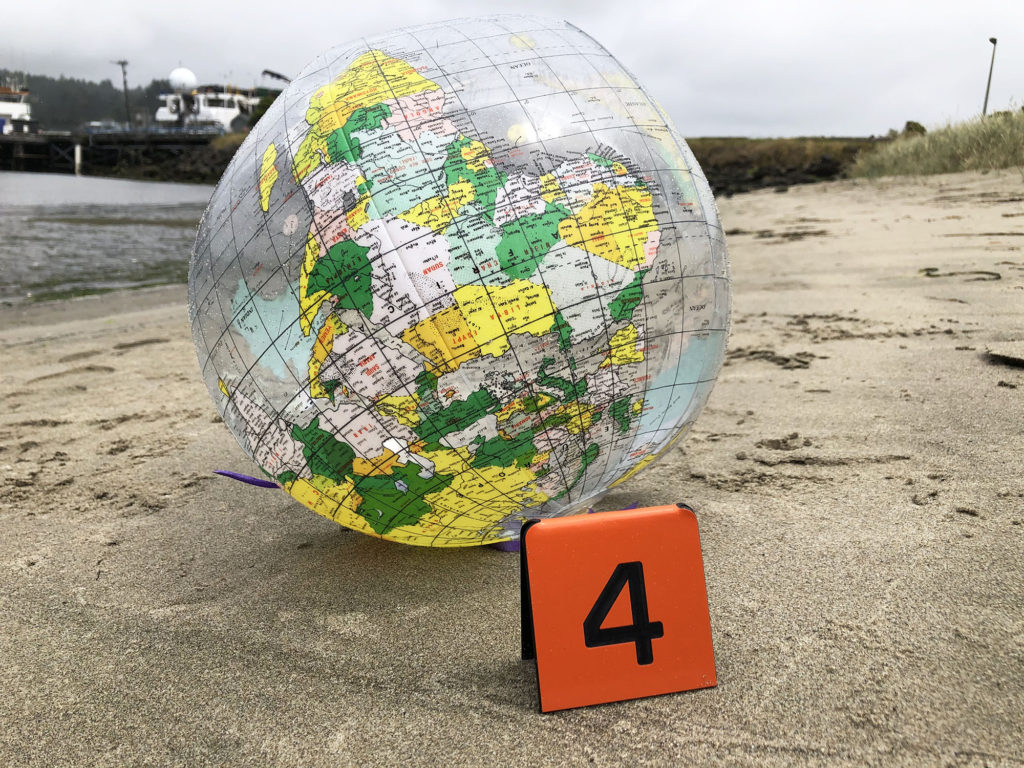
Biome Patterns Outcomes
-
Describe light and the colors we see and how they relate to leaf colors in various habitats.
-
Provide characteristics of water and plant responses to water availability.
-
Describe how plants are impacted by, and respond to, wind and extreme temperatures.
Biomes are ecosystems on a grander scale. For example, Lake Michigan in North America is a freshwater ecosystem, and lakes Michigan, Huron, Erie, Superior, and Ontario together are the Great Lakes biome. Both biome and ecosystem refer to a habitat’s environmental conditions and organisms. In this section, we’ll see how various physical factors impact life on land.
Light & Color
Leaves

When white light passes through a glass prism, we see a rainbow of colors with visible (to humans) wavelengths.
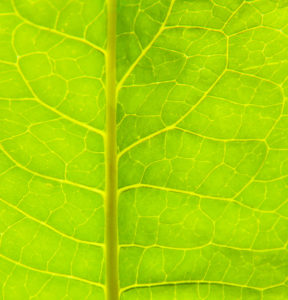
The color we see is reflected off, not absorbed by, an object. If we see a green leaf, the green wavelengths were reflected off of the plant.

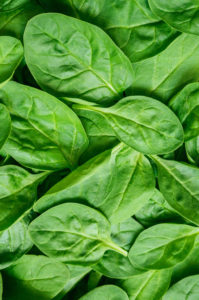
When you see a spinach leaf, the green color comes from the dominant green chlorophyll pigments, but other color pigments are present.
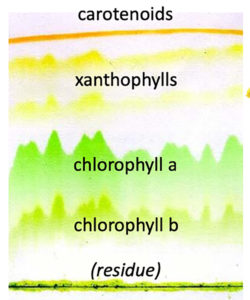
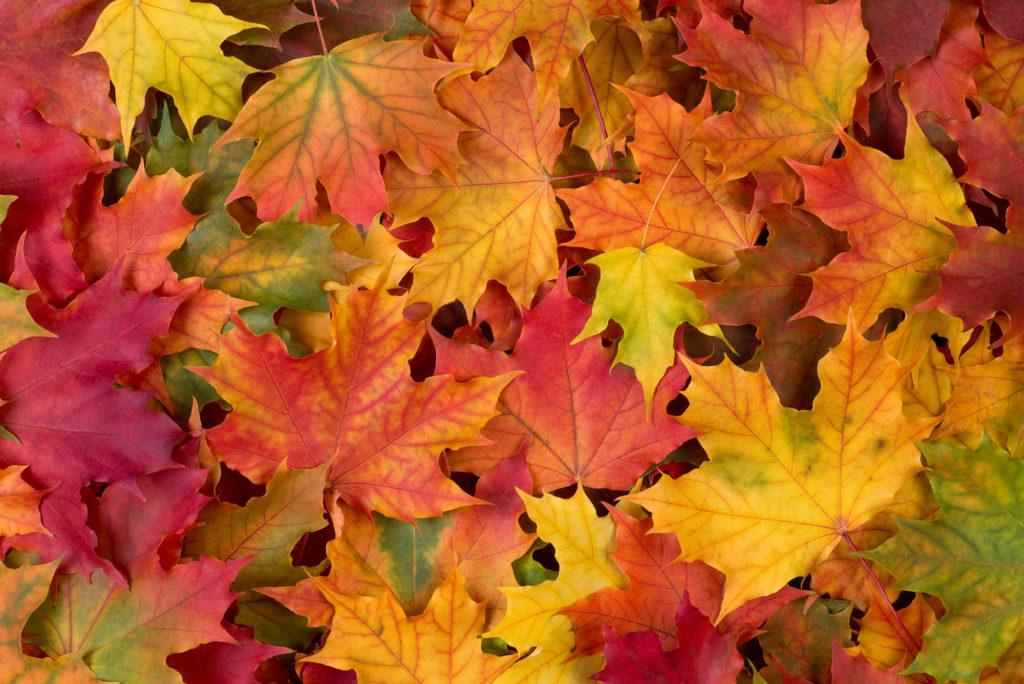
Fall leaf colors occur when chlorophyll degrades as winter approaches, day length shortens, and temperatures cool. Loss of chlorophyll reveals yellow, orange, and red pigments (carotenoids and xanthophylls) that were always there, but in lesser amounts than the green chlorophylls.
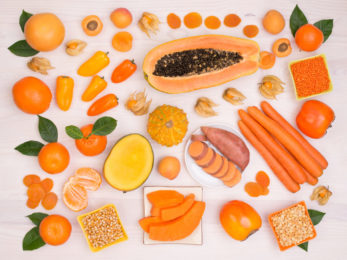
Producers high in Carotenoids

Consumers who eat them
Leaf color can relate to light intensity.
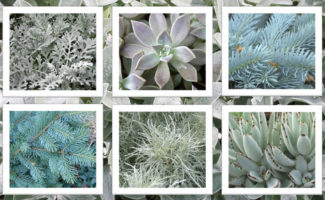
High Light

Low Light
We have all experienced how much cooler it can be in the shade of trees. Reduced sunlight can result in a small habitat (microhabitat) with increased moisture and lower temperature.
Water
In chemistry courses, one of the first molecules you learn about is the water molecule. The orientation of the two hydrogen and single oxygen atoms results in a number of significant properties.
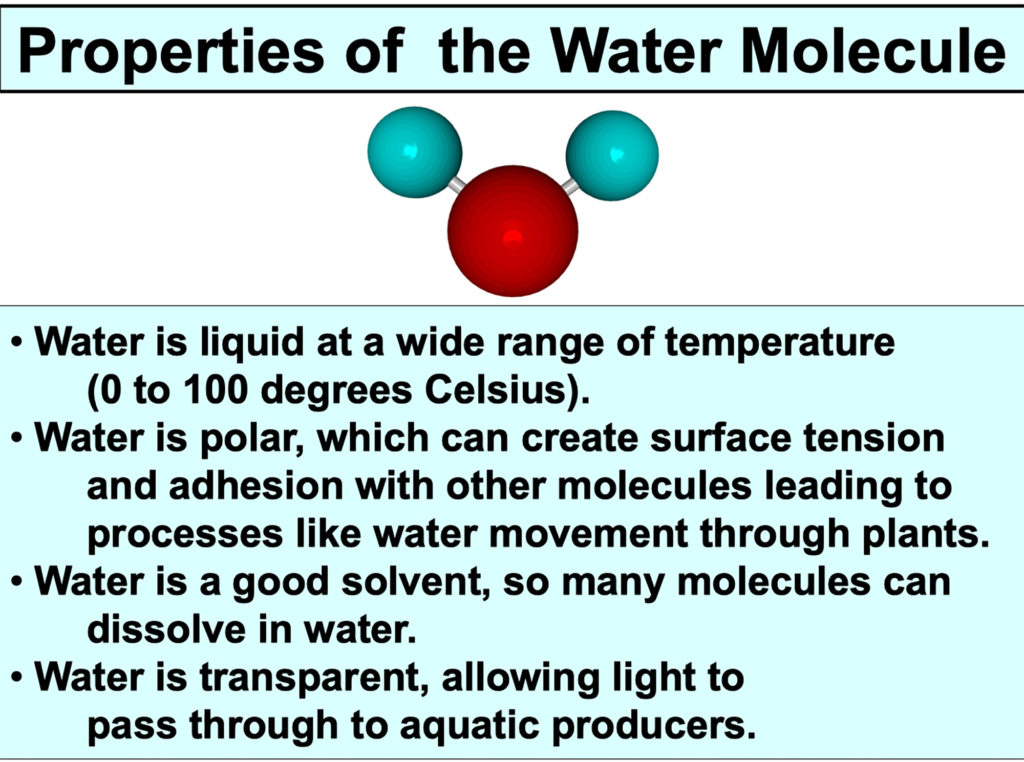
Water cover approximately 71% of the Earth’s surface and is found in all organisms. The molecule has a group of properties that make it well-suited for supporting life as we know it.
Water can also have a negative impact on organisms. Water indirectly impact plants by eroding away the soil.
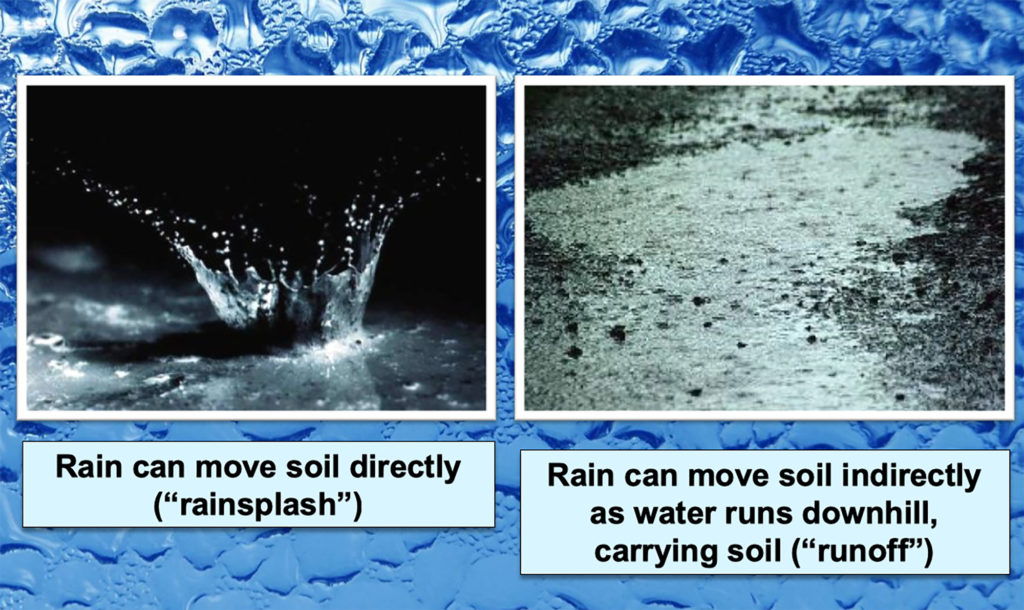
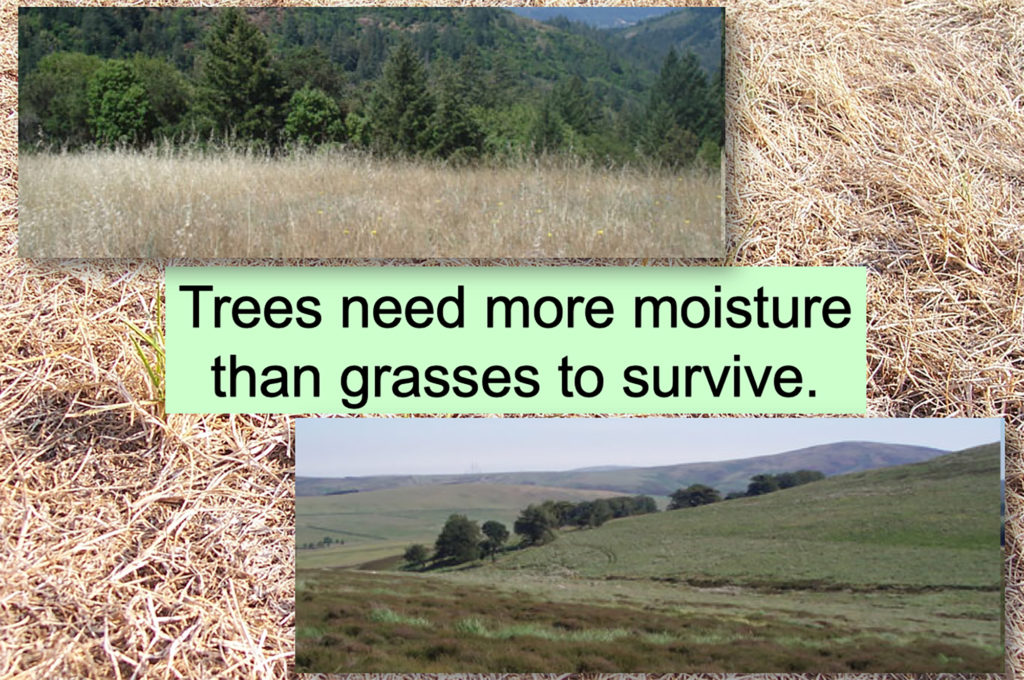
Sometimes you can find a ribbon of trees within a larger grassland. That indicates water is present, possibly a stream or highway with ditches alongside.
Based on what you have just learned or your background knowledge, what is the answer to the question in this video?
Succulent (water storing) plants that live in desert habitats have a variety of structural features that reduce water loss.
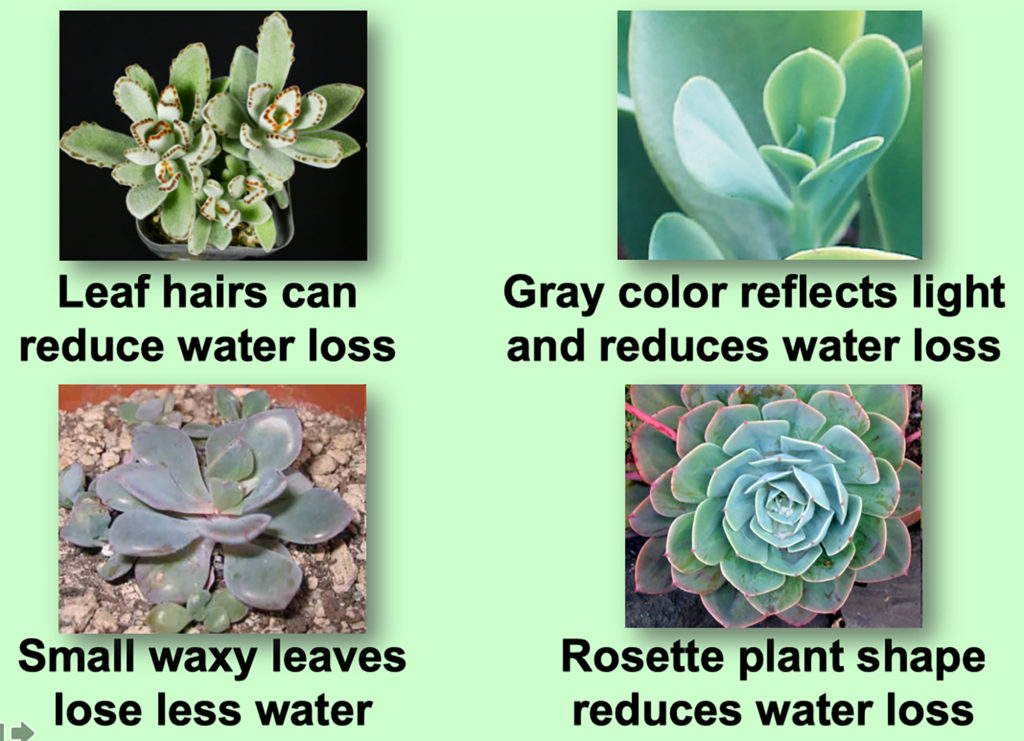
Wind & Temperature
Wind can have a significant impact on species.
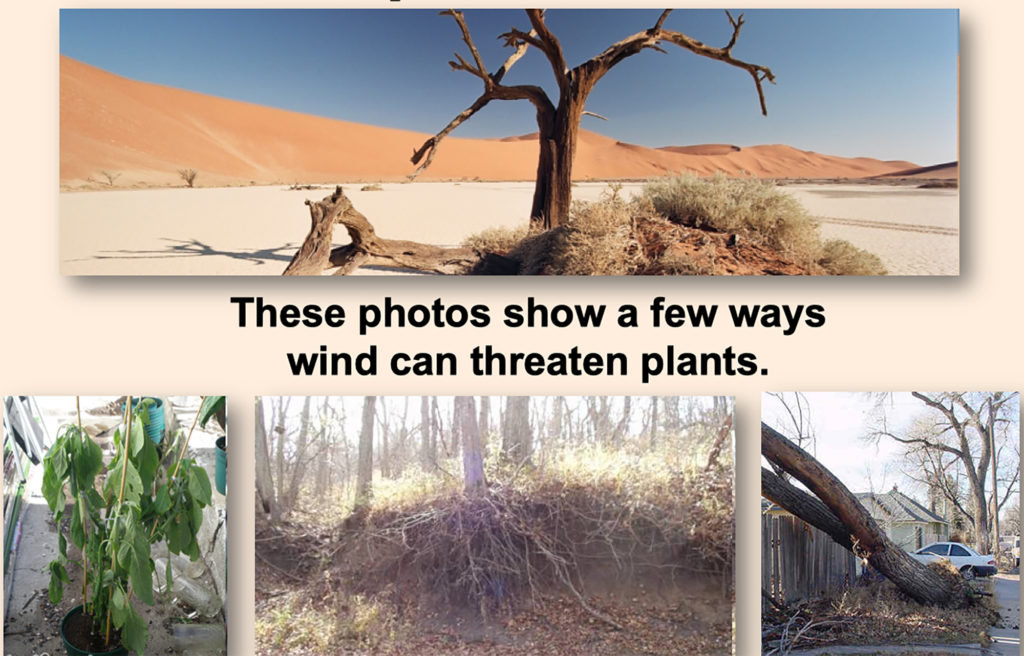
Wind can increase water loss, erode at plant structures, and drop temperature barriers around a plant.
Wind can also increase rates of soil erosion.
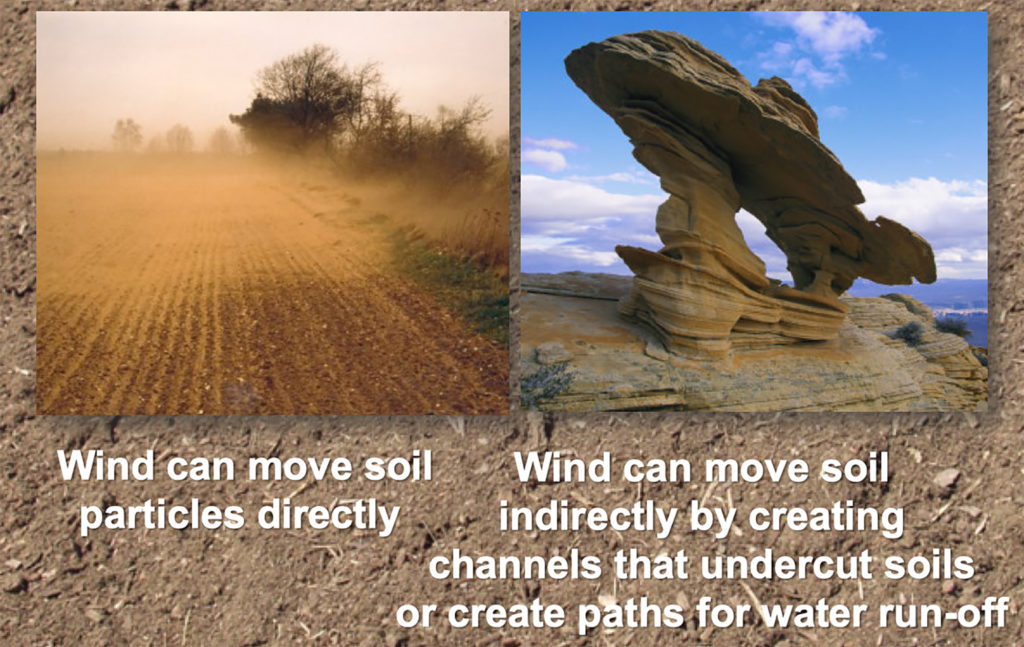
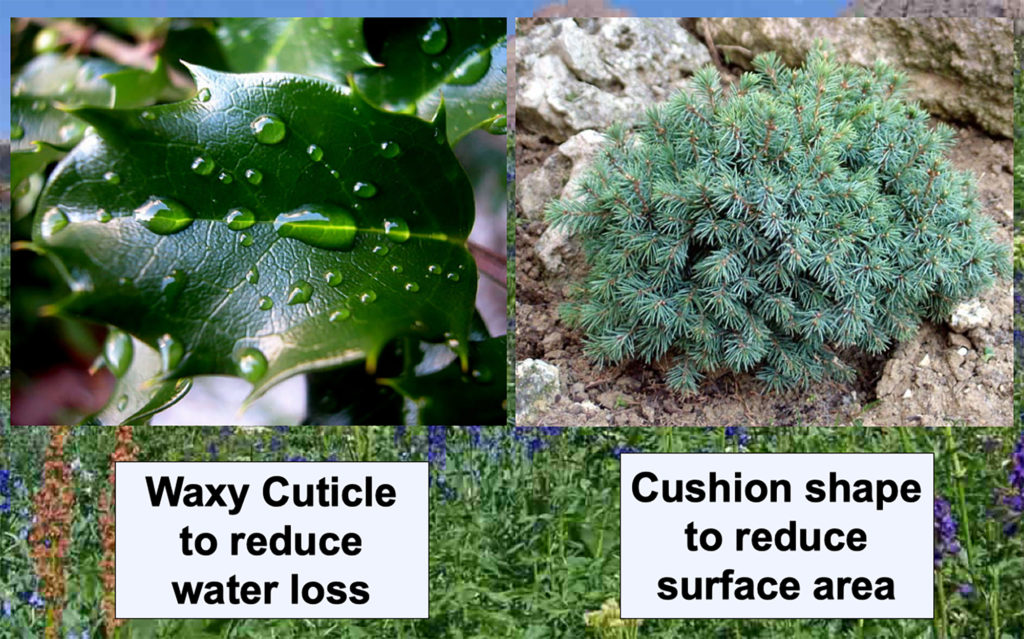
Plants in windy habitats have structural features that reduce exposure.
These are similar to adaptations plants have in cold habitats.
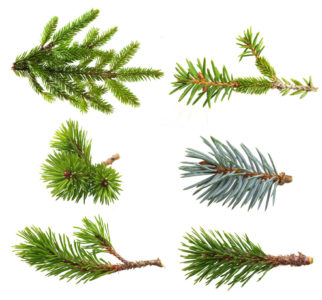
Conifer needles and cactus needles are both examples of leaf shapes that reduce exposure to harsh environmental conditions, including extremes in temperature.
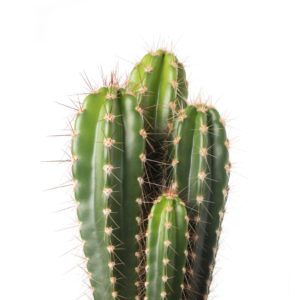
Pines that have evolved in windy coastal environments over time have a different growth form than pines living on central mountains.
Oregon Ecoregions
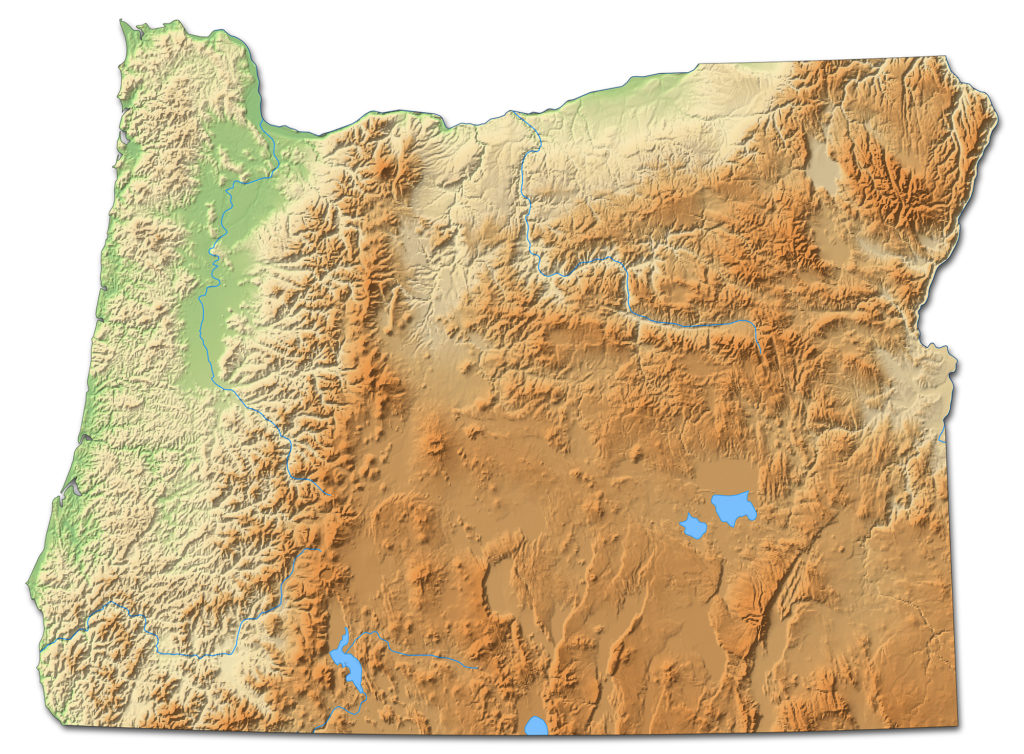
Mountains, valleys, and the ocean impact biome patterns in Oregon. The dramatic range of biome patterns results in many different ecoregions.
When you look at a physical map of Oregon, it is clear that there are a variety of terrestrial ecosystems: green forests to sandy deserts.
It is also apparent that these ecosystems are not running along horizontal latitude lines: mountains are having a significant impact on climate and vegetation.
This video provides an overview of the rainshadow effect, explaining why Corvallis is generally drier in the summers than Newport along the coast.
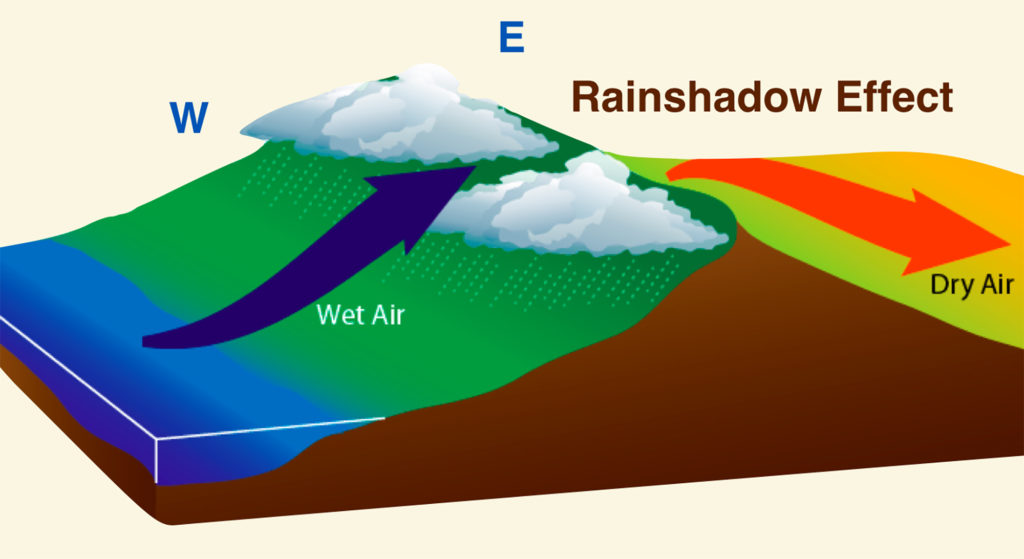
Moist and relatively warm air coming off the ocean heads up a mountain. These air currents typically run west to east. As the moist air cools, rain precipitates out on the west-facing side of the mountain. This leaves drier air heading to the east-facing side of the mountain, creating a rainshadow effect on the east side.
Oregon has two large mountain ranges, creating two large rainshadows. This video tour through them.
We have two large mountain ranges in Oregon: the Coastal Range and the Cascades.
Which numbers indicate the location of rainshadows created by these mountain ranges?
Answer: 2 & 4
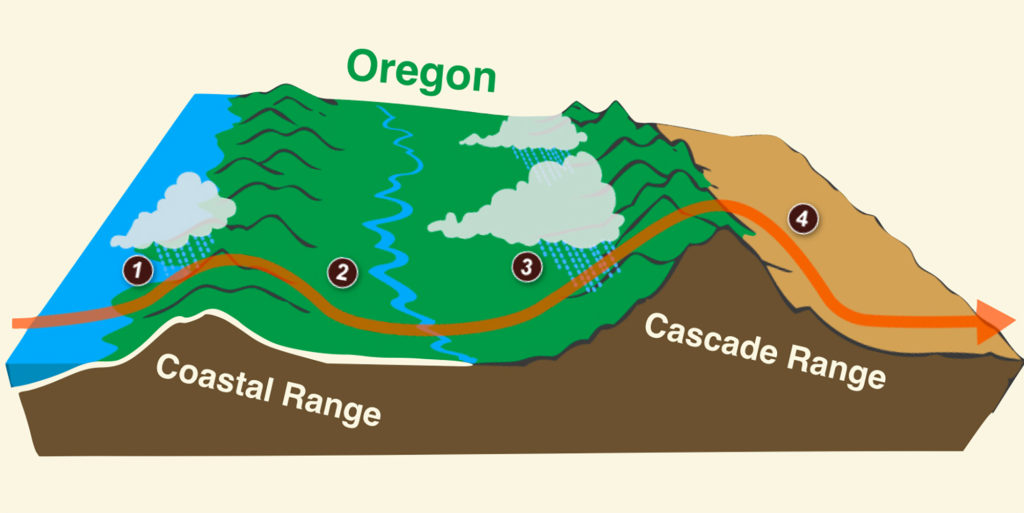
We are taking a trip across Oregon, starting in Newport Oregon along the Pacific Coast, and then heading east across the Coastal and Cascade mountain ranges.
You may be aware that coastal communities like Newport are often moist and mild. Why?

Along the Oregon coast, the high moisture keeps temperature relatively constant, with less extreme hot and cold temperatures than other locations at similar latitude.
The mountains rise very close to the ocean, forcing air to rise, cool, and precipitate out fog and rain. Many people escape the dry heat of the Willamette Valley by driving to the coast.
The west-facing slope of the coastal range is largely temperate rainforest, moist and cool enough to support moss, ferns, and trees like Sitka Spruce.
Although we are focusing on terrestrial ecosystems here, there are several rivers flowing to the ocean.

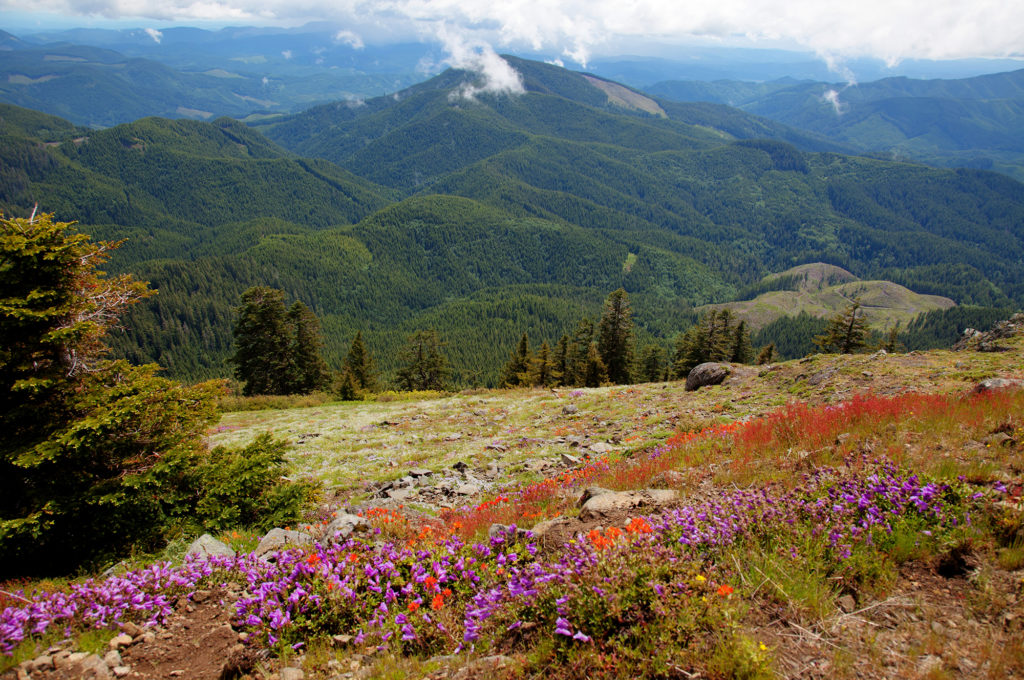
The tallest point of the Coastal Range is Mary’s Peak at 4097 feet. It has a meadow at the peak and trails for hiking. It can have snow for months, and since it is a close drive from Corvallis, many people get a snow pass and visit the peak in the winter months.
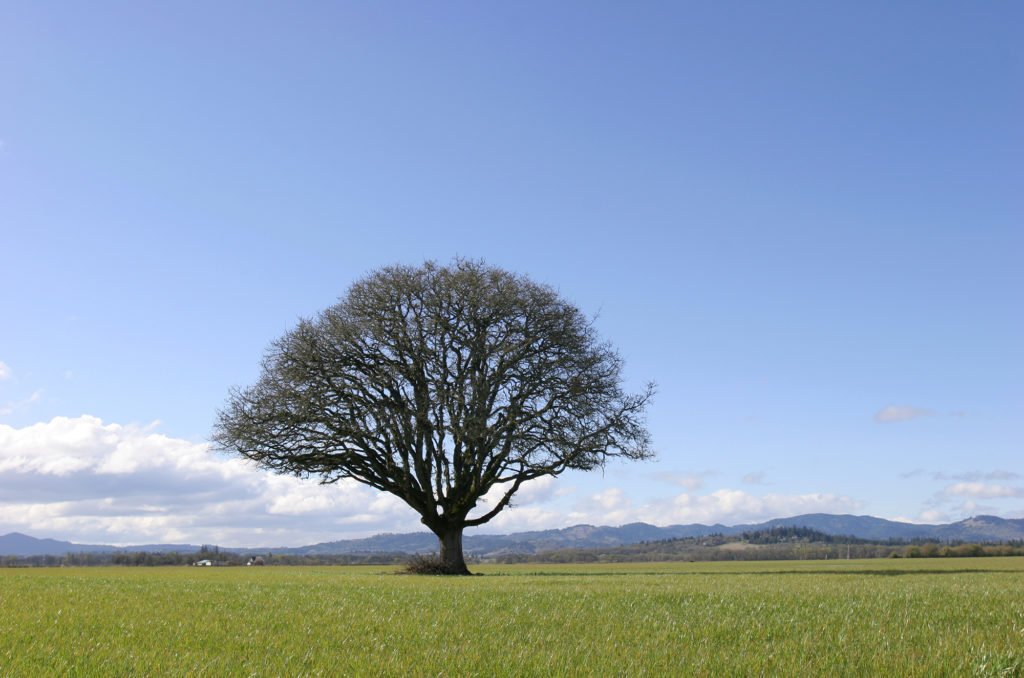
The Willamette Valley is in the rainshadow of the Coastal Range, and even though the winters are wet, the summers can be quite dry. Historically, the valley was oak prairie, wetlands, and coniferous forest. Now, much of the land is converted for agricultural, commercial, and residential use.
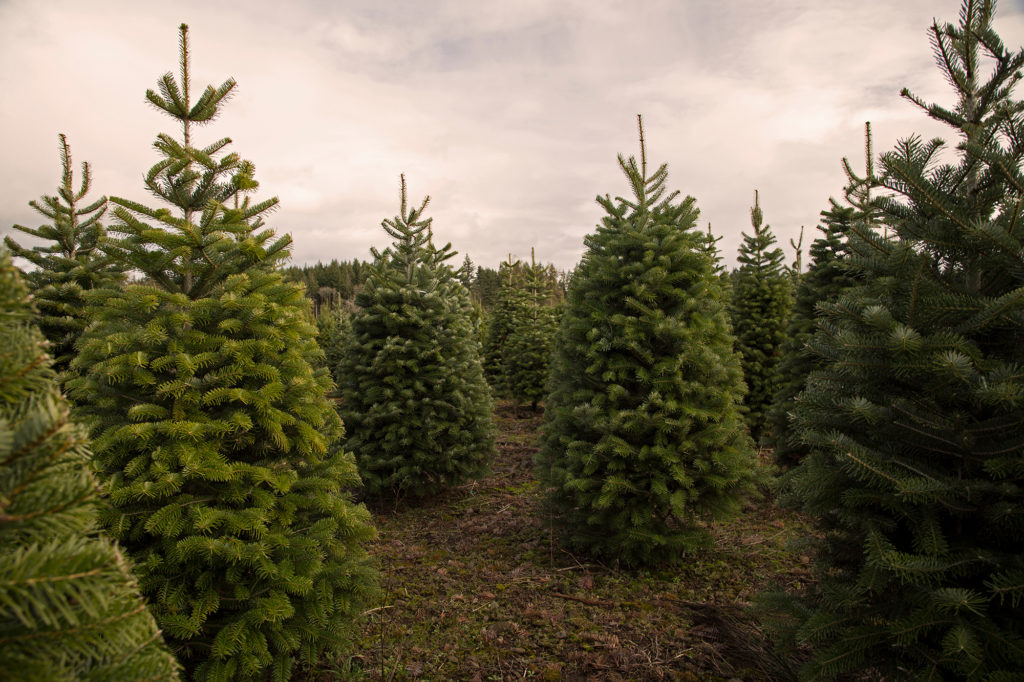
Dry summers with cool nights are not optimal for many crops. Two of the primary land uses are growing Christmas trees and grass seed.
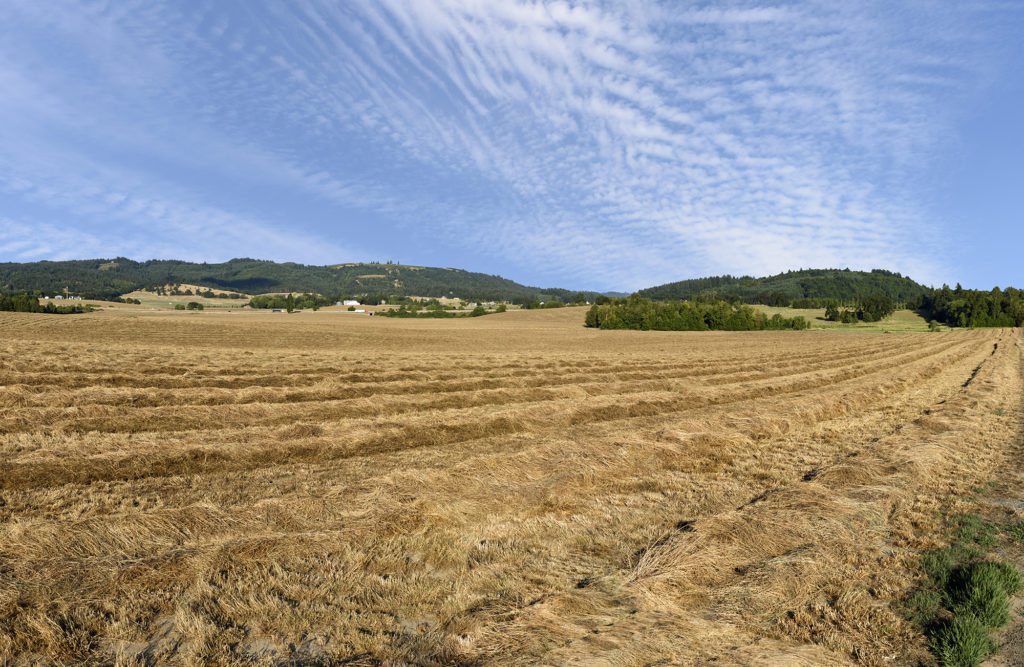

The west-facing slope of the Cascade Mountains has more moisture than the Willamette Valley as the air is rising, cooling, and precipitating. There are matches of temperate rainforest, including Cascadia State Park and Silver Falls..
Extensive forests of Douglas Fir and Hemlock are supported by the available moisture.
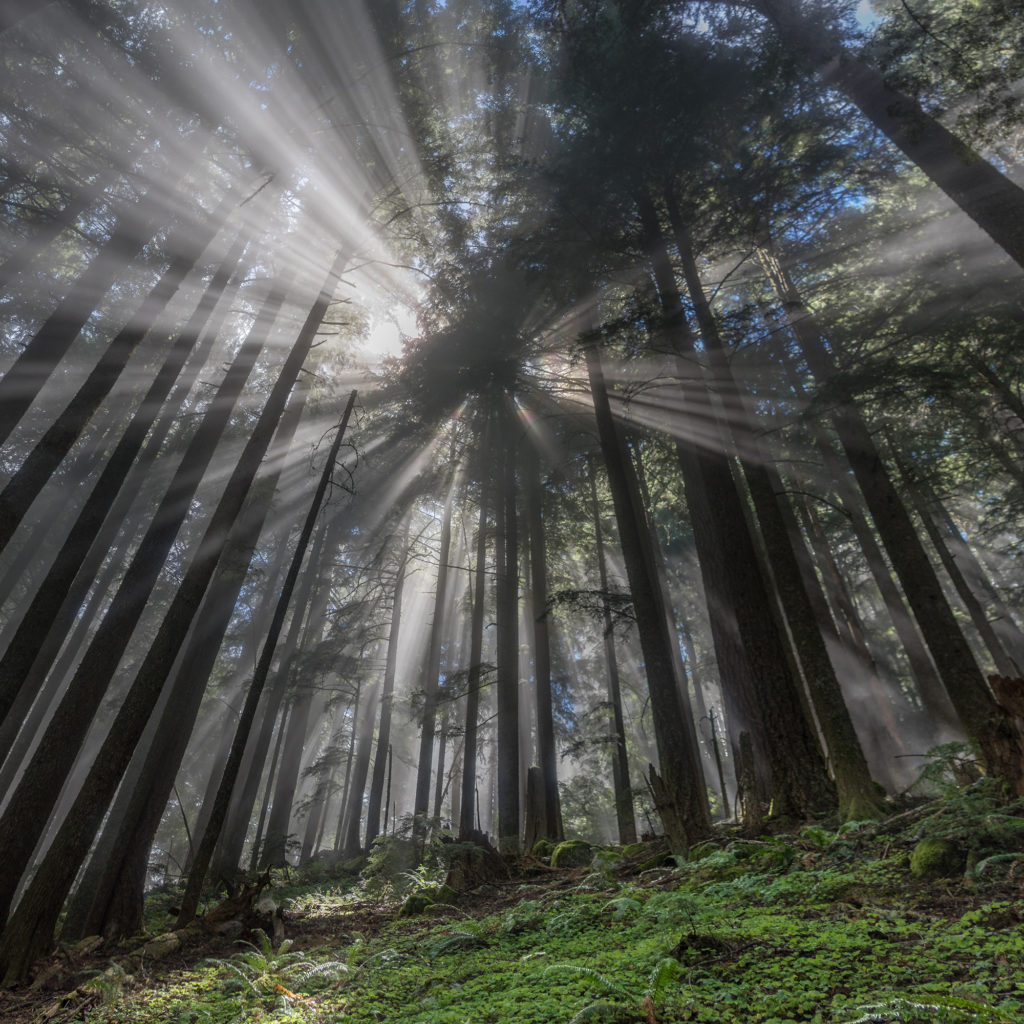

At higher elevations, temperature and moisture drop, and the dominant trees are Ponderosa Pines with their thick puzzle-piece bark.
Above tree-line where moisture and temperature drops significantly, meadows of low-lying plants replace the trees.
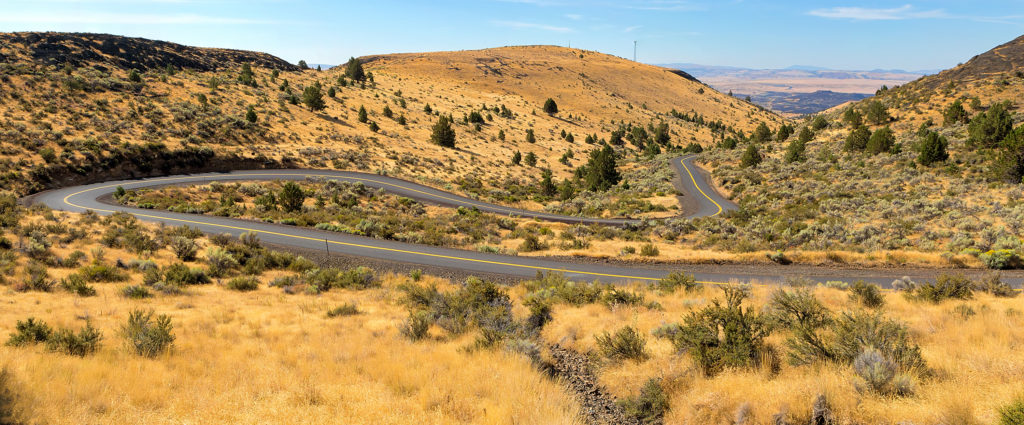
Eastern Oregon is a high desert, high because it is at elevation and can be cold, and a desert due to the rainshadow created by the Cascade Mountains.
Vegetation includes shrubs, grasses, and wildflowers. Some areas are so dry, vegetation is sparse; crops and livestock are supported by irrigation.
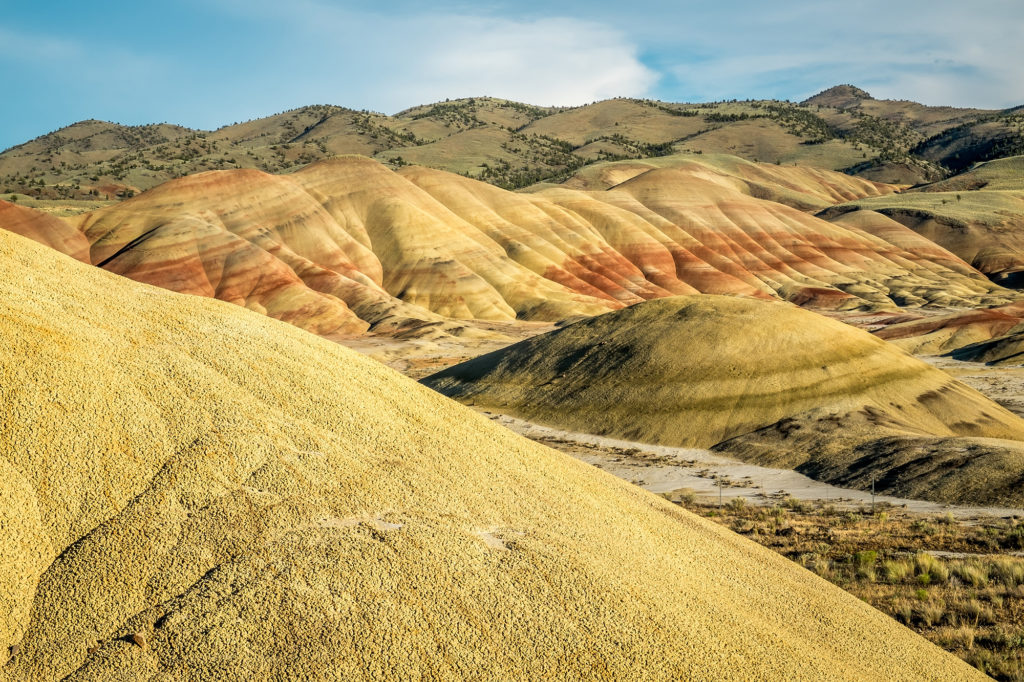
This is the end of Guide 3B’s content. After you check your knowledge over the material, proceed to the product page.

Check your knowledge. Can you:
-
describe light and the colors we see and how they relate to leaf colors in various habitats?
-
provide characteristics of water and plant responses to water availability?
-
describe how plants are impacted by, and respond to, wind and extreme temperatures?



